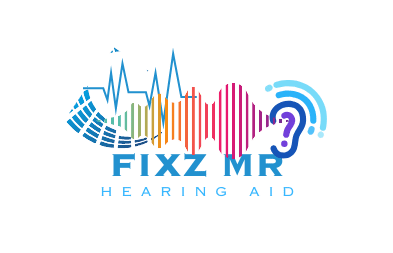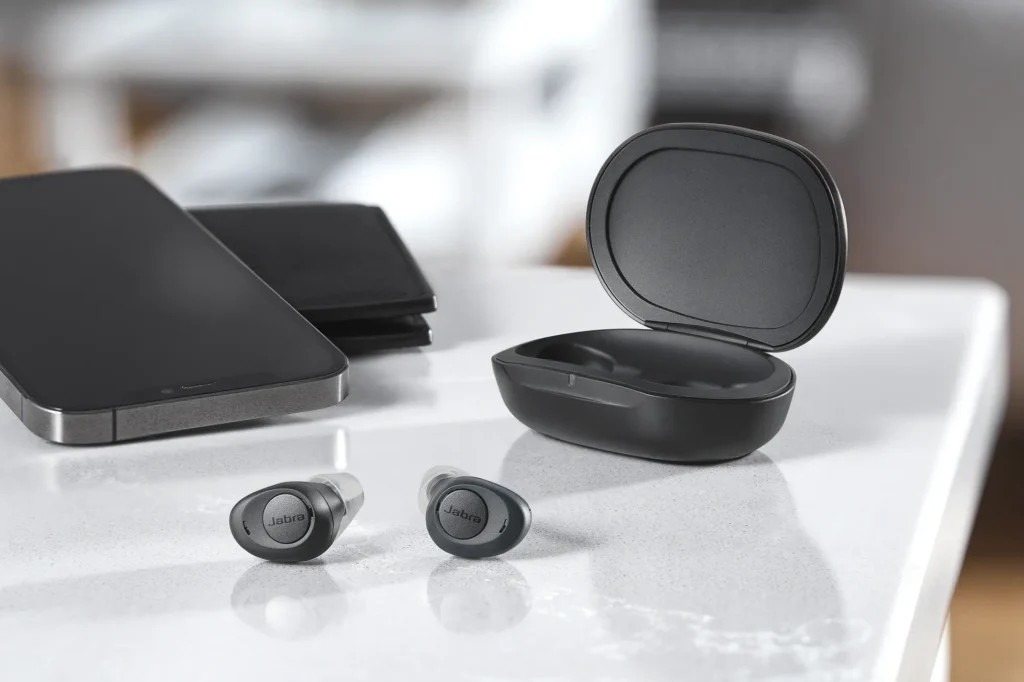Nano Hearing Aids is known for its budget-friendly digital hearing aids. They are priced between $297 to $597 per pair. These are designed for people with mild to moderate hearing loss. You can find Completely-In-Canal (CIC) and Behind-the-Ear (BTE) models from Nano.
Their offerings are extensive, including both CIC and BTE models. For example, the Nano CIC Recharge model is very light at just 0.9 grams. On the other hand, the Nano Sigma Plus Bluetooth model costs $597 and lets users connect via Bluetooth.
But, there have been concerns about the brand’s claims of high-end technology. Some legal cases have been filed, suggesting Nano might stretch the truth in advertising. As the hearing aid market grows, it’s vital for customers to choose trusted brands carefully. Although Nano models come with great features like rechargeable batteries, noise reduction, and strong amplification, they might not meet everyone’s expectations.
Key Takeaways
- Nano hearing aids are priced between $297–$597 per pair, with several models catering to mild to moderate hearing loss.
- Nano offers both CIC and BTE styles, promoting features like rechargeable batteries and noise reduction technology.
- The brand’s credibility is under scrutiny due to allegations of false marketing practices.
- Nano hearing aids provide manual controls, various listening modes, and come with a range of accessories.
- Consumer trust remains pivotal as the OTC hearing aid market becomes increasingly competitive.
Introduction to Nano Hearing Aids
Nano Hearing Aids is based in Phoenix, Arizona. It aims to offer affordable OTC hearing solutions. Established in 2017, Nano wants to make hearing aids easier to get by selling them directly online. They focus on people with mild to moderate hearing loss, providing options like Completely-In-Canal (CIC) and Behind-The-Ear (BTE) models. These come with cool features like Bluetooth and rechargeable batteries.
Overview of Nano Hearing Aids
Since its start, Nano has sold thousands of hearing aids each year. Their prices fall between $250 to $600 for a pair. Their business saw a big boost when OTC hearing aids got the FDA’s thumbs up in 2022, making hearing aids more available. But, some key points stick out: there are some serious critiques on their marketing, and Vermont took legal action, arguing Nano falsely said their products were from the USA.
Importance of Sound Amplification
For people with hearing issues, sound amplification means better living. Nano promises big on this, using digital tech in their hearing aids. They provide a wide selection, including very tiny models, meeting different needs. Plus, these benefits come at a lower cost than other brands like Lively and Eargo.
You’ve got 45 days to see if Nano’s solutions fit you. That’s longer than a month but not as long as the suggested 60-day time. Although there’s been some bad press and gripes on the Better Business Bureau, Nano keeps trying to get better in its products and service.
Types of Nano Hearing Aids
Nano Hearing Aids has many different devices to help with hearing. They have styles like Completely-In-Canal (CIC) and Behind-the-Ear (BTE). Each has its own benefits for the people who use them.
In-Canal (CIC) Models
The Nano CIC Recharge by Nano Hearing Aids is small and hard to see. It fits right in your ear canal, making it almost invisible. The Nano CIC Recharge is light and uses rechargeable batteries. This saves you from buying new batteries often.
They’re great for people with mild to moderate hearing loss. You get 12 hours of sound on one charge. This makes them very convenient.
Behind-the-Ear (BTE) Models
Nano’s BTE models like the Nano Sigma Plus Bluetooth are more powerful. They’re not as hidden as the CIC models but have more features. For example, they can connect wireless.
The Nano X2 Recharge is a standout BTE model. It lasts up to 23 hours on one charge. It has directional microphones that make the sound better. This model also includes four different settings and a charger you can use on the go.
No matter if it’s a CIC or BTE model, Nano Hearing Aids makes sure they are helpful and look good. They give hearing aid solutions that are good quality and not too expensive.
Nano Hearing Aid: Affordability and Cost
Nano hearing aids offer an affordable nano hearing aid choice in the OTC market. Prices are between $297 and $597 for a pair, based on the type. This makes it a good option for those looking for cost-effective hearing solutions.
Price Comparison with Competitors
The Nano X2 Recharge hearing aids are priced at $497 for a pair. They have tech for mild to moderate hearing loss. This places them as a more affordable choice.
The CIC Recharge model, at $297 for a pair, has noise reduction and feedback control. It’s both budget-friendly and effective. On the other hand, the Nano Sigma Plus Bluetooth hearing aids are $597 for a pair. They include a directional mic and noise reduction, offering similar benefits at a lower cost.
Financing Options Available
There are various financing plans for affordable nano hearing aid choices. These plans help lower the upfront financial stress on consumers. But, there have been some criticisms about Nano’s marketing. In 2022, the Vermont Attorney General filed a complaint for selling unauthorized products in the state. This backstory highlights the need to compare costs alongside company reputation.
Affordable nano hearing aid prices are definitely inviting. Remembering potential risks and doing thorough research is equally important before making a purchase.
| Model | Price (per pair) | Features |
|---|---|---|
| Nano CIC Recharge | $297 | Noise reduction, feedback control, 60 hours per charge |
| Nano CIC Digital Recharge | $397 | Four programs, noisy and loud places modes |
| Nano X2 Recharge | $497 | Technology for mild to moderate hearing loss |
| Nano Sigma Plus Bluetooth | $597 | Directional microphone, noise reduction |
Advanced Features of Nano Hearing Aids
Nano Hearing Aids have top-notch features to make your listening better. They have Bluetooth for connecting with phones, rechargeable batteries for easy use, and smart noise reduction. This makes hearing clearly in any situation much easier.
Bluetooth Connectivity
The Nano Sigma Plus Bluetooth model costs $597 for a pair. It’s great because of its strong Bluetooth connection. This lets users link it to a phone app for better control. Better control means a better listening experience for the user.
Rechargeable Batteries
Most of Nano’s designs have rechargeable batteries. They’re light and practical. For example, the Nano CIC Recharge model weighs only 0.9 grams. It can stay on for up to 60 hours on one charge. Then, there’s the Nano X2 Recharge BTE model. It can go 23 hours between charges. These battery features support different people’s needs well.
Noise Reduction Technology
Background noise can get in the way of hearing. Nano Hearing Aids solve this. They use smart tech to lessen outside noise. This keeps what you want to hear clear. It’s great for loud places or when you need to concentrate.
Want to know more about Nano Hearing Aids? Visit Nano Hearing Aids Review for costs, features, and what customers say.
User Experience and Satisfaction
When people talk about Nano Hearing Aids, they share what they like and don’t like. The nano hearing aid reviews show this clearly. Customers’ experiences are different, as seen in the reviews.
Customer Reviews and Feedback
Reviews on Nano Hearing Aids range from happy to not so happy. The average score is 3.7 out of 5, showing mixed feelings. Looking closer, 52% gave them the highest mark. This means they had a good time with the product.
Many happy customers point out the good price and special features like being rechargeable and reducing noise. These make their experience better.
Yet, some reviews also show that not everything was perfect. Customer satisfaction with the service had some bumps.
Common User Complaints
Still, 22% left 1-star reviews, pointing to big problems. They had issues with sound, returning items, and not understanding the warranty well. There were also complaints about noise, hard activation, and the fit of the aids. Getting quick help from customer service was also tough for many, leading to more frustration.
The main complaints were:
- Sound not being good enough
- Customer service not being quick enough
- Difficulty in using the product
Despite these setbacks, some problems were fixed by the company. They offered better products to the complaining customers. Yet, many reviews warned that fixing issues took too long, with lots of calls and waiting.
If anyone needs help or has questions, they can contact Nano Hearing Aids. They can call 619-738-2438, email support@nanohearingaids.com, or use Live Chat at www.nanohearingaids.com. With all the different feedback in nano hearing aid reviews, doing your homework before buying is very important.
Legal and Ethical Considerations
Legal issues with Nano Hearing Aids are in the spotlight. The Vermont Attorney General’s Office has raised concerns. They say Nano Hearing Aids wrongly called their products FDA-approved hearing aids. In reality, they are personal sound amplification products (PSAPs). This problem is part of a bigger issue in the hearing device industry. Companies must act ethically to keep their trust and credibility.
Claims of false advertising against Nano Hearing Aids show why ethics matter in the hearing device field. When buying these devices, customers often find it hard to understand the technical details and medical OKs. This makes honest marketing very important.
Now, let’s look at the numbers in the nanotechnology area:
| Year | Event |
|---|---|
| 1959 | Richard Feynman’s talk on nanotechnology |
| 1982 | IBM researchers display atoms of gold using a scanning tunneling microscope |
| 2000 | National Nanotechnology Initiative defines research and technology parameters |
These past events show the path to complex rules and ethics we have today. The hearing device sector works within rules that demand truth and dependability. Following ethical rules helps put checks in place to protect buyers.
Adhering to the law isn’t enough. Being ethical also means being clear. This is especially key in the hearing device business. Hiding important information from customers can break their trust. It can also damage the company’s good name.
Alternatives to Nano Hearing Aids
Looking into over-the-counter (OTC) hearing aid options can help you find what best meets your needs. It’s smart to talk to an audiologist first. They can help make sure the device fits your unique hearing needs. Here are some top OTC hearing aid brands and the value of getting professional advice.
Other Reputable OTC Brands
There are many reliable OTC hearing aid brands. A few well-known names are:
- Eargo: It’s loved for being lightweight, unseen, and easy to recharge.
- Bose SoundControl: It stands out with its custom sound features and simple app controls.
- Go Hearing: This brand is known for its affordability and design for mild-to-moderate hearing loss.
| Brand | Key Features | Price Range |
|---|---|---|
| Go Hearing | Affordable, suited for mild-to-moderate hearing loss | $199 – $399 |
| Eargo | Lightweight, unseen, rechargeable | $1,500 – $2,950 |
| Bose SoundControl | Customized sound, app controls | $850 – $1,000 |
Consultation with Audiologists
Getting advice from an audiologist is key when choosing a hearing aid. They give you info that’s specific to you. This ensures you pick a device that fits your needs just right. Talking to an audiologist also helps you avoid making the wrong purchase.
In the U.S., over 36 million people deal with some hearing loss. This underlines the importance of professional help. Working with an audiologist for advice can not only better your hearing but also your life quality overall.
Future of Nano Hearing Aids
The hearing aid industry is evolving fast. This is driven by new technologies. For Nano Hearing Aids to succeed, they must navigate through legal and ethical issues. They also need to keep innovating. Overcoming these hurdles could change how people view and use Nano’s products later on.
Technological Advancements
The future of hearing aids relies on high-tech integration. Nano Hearing Aids has the chance to be at the forefront. They can do this by adding advanced features. These could include better connections and sounds suited just for the user. They could also sync better with smart devices. This would give users more say in how they hear.
Looking at some customer-focused stats can help to show Nano’s promise in this changing market:
| Metric | Value |
|---|---|
| Customer Success Rate | Over 96% |
| Full Refund Guarantee | 45 days |
| Standard Warranty | 12 months |
| Elite Protection Plan Cost | $79 (or 4 payments of $19.75) |
| 5-Star Rating (from 5,090 reviews) | 81% |
| BBB Accredited Listings | 2 (ratings pending) |
These numbers show users trust Nano’s work and what it offers. Showing solutions to legal and ethical matters openly can strengthen this trust. This would also help Nano take full benefit of new technologies in the future. For more, a Forbes review gives a deep look into Nano’s possible future.
The hearing aid market is getting bigger. For Nano to lead, they must keep on innovating for what users need. Additions like better connections and sound settings personalized for each user could change the whole experience. It would keep Nano at the top of the tech game.
Conclusion
More than 5% of people worldwide have disabling hearing loss. This has increased the need for great hearing aid devices. Nano Hearing Aids is making a big impact in the Over the Counter (OTC) market. They offer CIC and BTE models with special features like rechargeable batteries and nanotechnology. They also keep their prices affordable. But, before you buy, you should look into customer experiences and any related legal and ethical concerns.
Nano Hearing Aids stands out for their effort in sound enhancement technology. They have even brought new nano microchip innovations. But some users have shared concerns like sounds being distorted, feedback problems, and issues with customer service. To stay at the front of the game, Nano Hearing Aids must address these issues. They need to keep making better products and keep users’ trust.
For Nano Hearing Aids to keep on being successful, they must be flexible and keep good ethical standards. Hearing loss is expected to impact 1 in 10 people by 2050. So, it’s key for the company to offer reliable, top-quality products. They need to strike a balance between affordability and superior quality. Buyers should think carefully about what they need in a hearing aid. It’s smart to talk to experts in hearing health. They can help find the best solutions for your specific needs.











